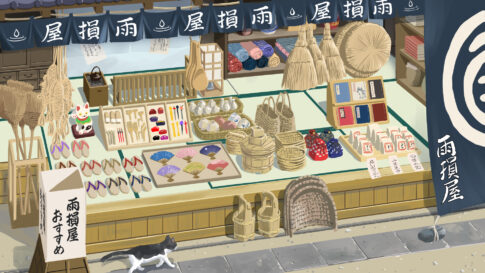Acts of torts by Amazon [Appendix 1-20]. Amazon’s claim that the use of ‘Cath Kidston’ is an Intellectual Property Infringement (trademark violation)
By not disclosing the rights owner claiming the Intellectual Property infringement, Amazon imposed disadvantages on the Claimant that go beyond a reasonable extent. Such action is considered to be an abuse of a superior bargaining position.
[Excerpt from the Intellectual Property for Rights Owners on Seller Policies]
When the Claimant checked the trademarks of Cath Kidston, she found that CK Acquisitions Limited owned Cath Kidston in 2021 at the time when the Claimant purchased the genuine item. After going into administration, PwC, which was appointed as one of the Joint Administrators of CK Acquisitions Limited, completed the sale of the brand, website, and intellectual property of CK Acquisitions Limited to Next Retail Limited on 28 March 2023. Having perused the UK company register of CK Acquisitions Limited, the Claimant learnt that the company owned Intellectual Properties of Cath Kidston all over the world, including in the UK, the EU, and Singapore, and that the owners have been changed to Next Retail Limited accordingly.
Regarding the owners of Cath Kidston trademarks in Japan, trademarks in the Japanese language continue to be listed as ‘CK Acquisitions Limited’ whereas international registrations were changed to Next Retail Limited on 8 February 2024.
Based on the above investigations and for the reasons presented below, the Claimant alleges that Amazon abused the Brand Registry and made the Intellectual Property infringement claim arbitrarily to target the Claimant.
(1) There is no reason for CK Acquisitions Limited, which went into administration, to claim a trademark violation for a parallel-imported item it sold more than 2 years ago.
(2) The item in question has been discontinued and is no longer available to purchase in the product range of the Cath Kidston store run by Next Retail Limited, the current rights owner of the brand. If Next Retail Limited made the claim of a trademark violation with the intention of eliminating a genuine parallel-imported item, this would have been done to secure their profits. Hence, such a trademark claim should have been applied to all items sold by their competitors on Amazon. The Claimant, however, reasserts that Amazon claimed the Intellectual Property infringement for a single genuine Cath Kidston item which the Claimant had purchased from Cath Kidston and sold in the past – the claim did not extend to the other 303 items which the Claimant had listed as Cath Kidston.
(3) Amazon asked the Claimant to appeal, if necessary, by no later than the day after the Intellectual Property infringement claim was made. However, although the Claimant’s appeal was submitted on time, along with evidence to prove the item is a genuine parallel-imported item, it was unilaterally rejected by Amazon without even disclosing the rights owner and giving the Claimant an opportunity to appeal directly to the said rights owner. Thus, Amazon completed the process of eliminating a parallel-imported item on their website.
Read about this in more detail: Claimant’s Brief 12 (pp.4-7)






